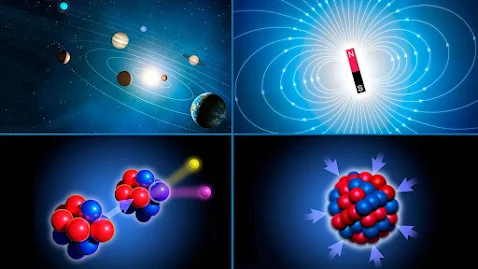Introduction to General Relativity:
The Equivalence Principle
Einstein's theory of General Relativity builds on the Equivalence Principle, which states that the effects of gravity are indistinguishable from the effects of acceleration. This principle implies that a uniform gravitational field is locally equivalent to an accelerated frame of reference.
Einstein's Field Equations
The heart of General Relativity is encapsulated in Einstein's field equations:
where:
These equations describe how matter and energy influence the curvature of spacetime.
Spacetime Curvature and Geodesics:
Metric Tensor
Geodesics
In curved spacetime, the path that light follows is called a geodesic. Mathematically, a geodesic is the curve that minimizes the spacetime interval:
Gravitational Lensing:
Bending of Light
When light passes near a massive object, its path bends due to the curvature of spacetime. This bending can be calculated using the lens equation:
where:
Deflection Angle
Historical Verification:
1919 Solar Eclipse
The first observational confirmation of light bending by gravity was made by Sir Arthur Eddington during the solar eclipse of 1919. Eddington measured the positions of stars near the Sun and found them to be shifted, confirming Einstein's prediction.
Types of Gravitational Lensing:
Strong Lensing
Occurs when the alignment of source, lens, and observer is very close, resulting in multiple images, arcs, or Einstein rings.
Weak Lensing
Involves slight distortions in the images of background objects. This type is used to study the distribution of dark matter.
Microlensing
Causes temporary brightening of a background star when a smaller object like a star or planet passes in front of it. This technique is often used to detect exoplanets.
Mathematical Representation and Calculations:
Deflection Angle in a Weak Field
Exact Solutions
For strong fields near black holes or neutron stars, exact solutions to Einstein's field equations are required. The Schwarzschild and Kerr metrics are commonly used for these purposes.
Applications and Implications:
Astrophysics
Gravitational lensing is used to study distant galaxies and quasars, revealing information about their mass and structure.
Cosmology
By observing the lensing of distant objects, scientists can map the distribution of dark matter and study the expansion of the universe.
References and Further Reading:
- Einstein, A. (1916). The Foundation of the General Theory of Relativity. Annalen der Physik, 354(7), 769-822.
- Carroll, S. M. (2004). Spacetime and Geometry: An Introduction to General Relativity. Addison-Wesley.
- Weinberg, S. (1972). Gravitation and Cosmology: Principles and Applications of the General Theory of Relativity. Wiley.
- Misner, C. W., Thorne, K. S., & Wheeler, J. A. (1973). Gravitation. W. H. Freeman.
- Schneider, P., Ehlers, J., & Falco, E. E. (1992). Gravitational Lenses. Springer-Verlag.
- Dyson, F. W., Eddington, A. S., & Davidson, C. (1920). A Determination of the Deflection of Light by the Sun's Gravitational Field, from Observations Made at the Total Eclipse of May 29, 1919. Philosophical Transactions of the Royal Society A: Mathematical, Physical and Engineering Sciences, 220(571-581), 291-333.






































